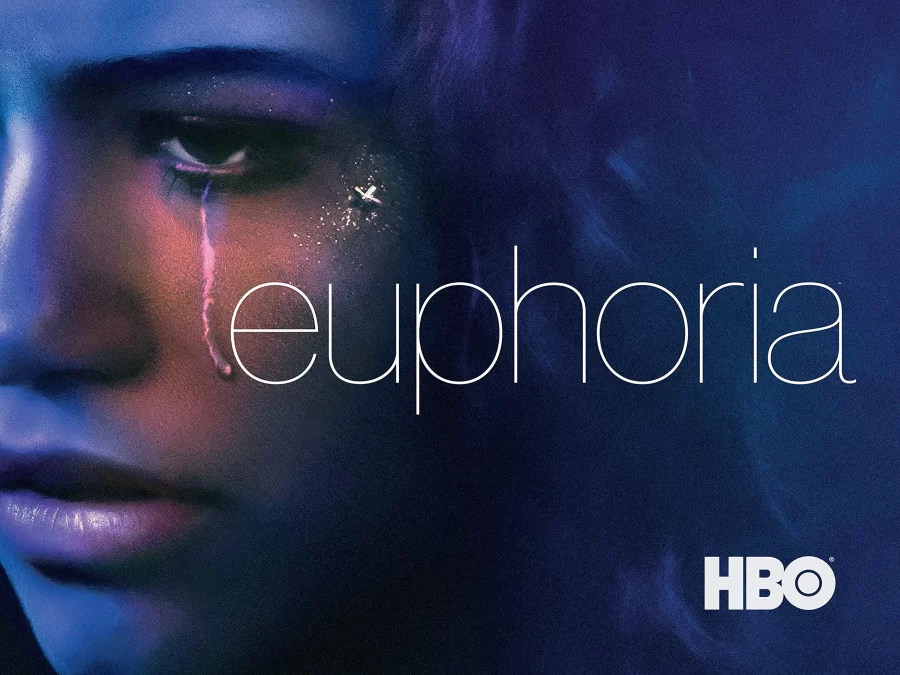‘Euphoria’ offers unflinching teenage experience
Why one show dominates high school-related entertainment
March 2, 2022
The popularity of the TV show “Euphoria” is undeniable. Every demographic imaginable seems to either know about, talk about, or watch the show. When season one came out in 2019, “Euphoria”-related content swallowed the internet. Reputable newspapers published article after article about the show. On social media, people posted clips ranging from elaborate skits inspired by the show to in-depth analyses of the characters. “Euphoria”-themed parties were also quite the rage. Most people knew the premise of “Euphoria” even before watching a single episode: high schoolers using and dealing drugs, having sex, enduring toxic relationships, and navigating friendships all while coping with underlying trauma (plus a 10-year-old drug dealer and lots of glitter).
Still, I was skeptical about “Euphoria.” I thought maybe the internet just wanted something new to talk about. After watching it, though, I know “Euphoria” completely deserves the attention it receives. The show offers a fresh interpretation of high school life backed by incredible cinematography and an excellent original score.
What sets “Euphoria” apart from other stories about high school is the character treatment. In most movies and TV shows, characters only develop in terms of their defining qualities or situations: the storyline of a queer character revolves around their queerness; the storyline of a character who’s a racial minority revolves around their race. While these are important stories to share, defining characters by their most obvious traits often boxes them into predictable, static storylines. Furthermore, it sends a message to viewers, some who may identify with these characters, that their most noticeable trait defines them.
“Euphoria” strays from the stereotypical portrait of high school students (fashionable mean girls, popular dumb jocks, weird band kids, glasses-wearing nerds, etc.) by giving each character a truly comprehensive and unflinching storyline. Although at times they play into their archetypes, the characters are nuanced people. Yes, Rue is a depressed drug addict, and Cassie is a “dumb” blonde, and Maddy is a sharp-tongued Latina, and Nate is a macho quarterback with a secret sensitive side, and Fez is just… well… Fez. But there is so much more depth to each of these characters than what first meets the eye, and the aspect of a character that would traditionally shape their storyline is peripheral to the actual plot.
Kat’s sex tape is released online without her consent, but instead of letting fear and shame consume her, she takes charge over how other people perceive her body and her sexuality. Jules seeks out violent sexual encounters before her relationship with Rue. In her new, seemingly healthier relationship, Jules must confront the length to which she can excuse the harmful (non-violent) behavior of someone she loves. Her transgender identity isn’t sidelined, but it plays a subtle and important role in her character development.
Aside from the reliably outstanding performances by the actors, the creators of “Euphoria” also bring out each character’s self expression in their use of makeup, which is its own art form within the show. At its heart, makeup is the most honest entrance into each character’s psyche. From Jules’ eccentric neon eyeliner to Cassie’s simplistic nude eyeshadow, each look cues viewers into what is really going on inside the characters’ minds.
The cinematography is the final piece of what brings each character to life. It adds essential emotion to any story that a script or actor, no matter how impressive, cannot access. Everything from lighting to camera movement to composition of a scene to frequency of cuts to the color palette of a scene tells a part of the story that a script cannot.
A particularly stand-out moment of the striking cinematography in “Euphoria” happens in the pilot episode. During a house party, Rue goes into the bathroom to do drugs, and when she comes out, the hallway actually spins around her. To pull this technique off, the hallway was built on a gimbal and the extras were strapped to the floor, rotating with the actual set. They maintain their positions as Rue stumbles all over the place, trying to decipher between actual reality and drug-induced psychosis.
The show’s cinematography continually pushes the boundaries of what is and isn’t real. It distinguishes between natural and heightened emotion, whether it be from love or drugs or sex, in a way that allows viewers to connect with the characters’ experiences (without, you know, actually doing those things). In a show where many of the characters are chasing that euphoric feeling, the cinematography in “Euphoria” gives viewers access to the heightened, tainted world of East Highland.
While the characters feel incredibly real, as a senior in high school (albeit, a private high school with a pretty sheltered student body), the show does not feel very realistic. The closest “Euphoria” gets to a realistic high school experience is the actual presence of a high school. Schoolwork doesn’t seem to exist. The parents in “Euphoria” do not have any authority over their kids, who, in turn, function as wholly independent, adult people.
Aside from that minor detail, “Euphoria” is an amazing TV show with intriguing, relatable characters and plotlines that will have you holding your breath—it’s definitely worth the watch.

